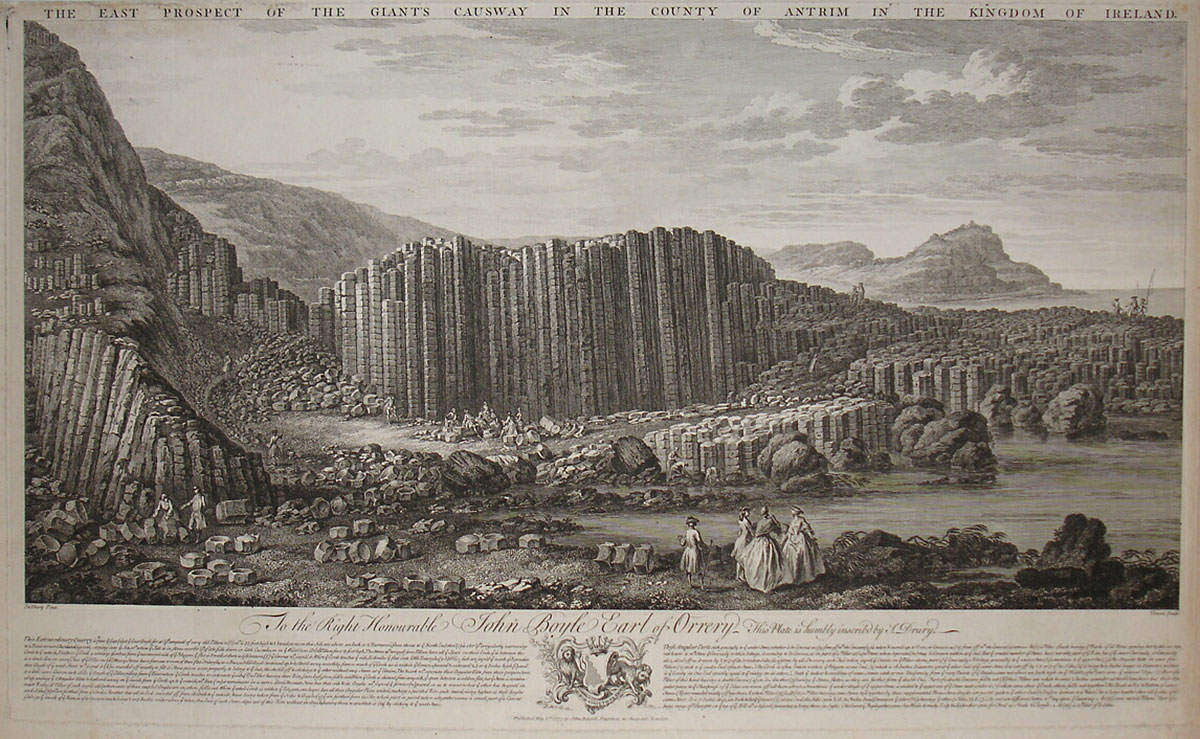 MENU
MENU
 MENU
MENU

"The East Prospect of the Giant's Causeway," by Susanna Drury, 1743/4. The Causeway was first studied in 1639 and became a popular tourist attraction to Victorians in the mid-19th century. Image courtesy of Wikimedia Commons.
The trip to Ireland was largely taken up with visiting geological sites and agricultural schools. The Hitchcocks arrived by boat at 10:00 at night and had to ride a further 8 miles to Dublin and then take one of the “famous Irish cars” to their hotel. The Irish cars were open affairs, where the passengers stowed their luggage in the middle and sat with their feet dangling over the wheels. Orra felt ridiculous, but finally had to laugh. Her sense of humor frequently saved her. Their hotel that night was old and dirty. Happily, the bed linens were clean, but the furniture “looked as though it might have come out of the ark & been in use ever since.”
Dublin was a beautiful but contradictory city full of well-dressed people and beggars. Even though she must have heard of the potato famine, Orra could not understand why the men didn’t find jobs, rather than beg. She doled out bread stowed in her pocket from the hotel. Edward also was struck by Ireland’s poverty and the emptiness of the countryside, drained of people who had left for America. The couple were besieged by beggars everywhere they went. Edward commented that the Irish strongly condemned American slavery, yet were oblivious that “vast multitudes of themselves are more degraded & more inflexibly fettered in slavery than the blacks.”
On the way to Belfast, Edward noticed a great deal of unsorted “drift” and mountains of limestone and basalt. From Belfast to Larne, the soil was "red, clayey & stiff" and the base rock was basalt and flinty chalk. The road to the Giant's Causeway was "hardened chalk with basalt above usually full of flints," with occasional greensand. A red sandstone and conglomerate looked similar to those of the Connecticut River Valley. He was as much interested in the geology that formed the views as he was taken by the splendor of the views themselves.
They enjoyed the Giant’s Causeway. Edward was nearly ecstatic in his observations of the geology on the road from Larne through Glenarvon, Cushendall, and Ballycastle. A rainbow over a breathtaking view as they approached the Causeway reminded him of his own "Sermon on the Rainbow". The naturally occurring columnar basalts of the Causeway were "as perfect as art could make or represent them." The “enormous charge” to take a boat into a cave 600 feet long and 90 feet high was well worth it. From the cave, they sailed along the coast. Edward counted 14 layers of rock in cliffs 400 feet high, “worn into most fantastic shapes & nothing can exceed the wildness of the shore." Orra listed the Causeway's vernacular names: "giant's crown, his castle parlour, organ, nurse & child, lion's head, amphitheater, horseshoe bay, priest going to prayers with his book in hand, the loom & various other fanciful names."
After a day and a half at the Causeway, they took an overnight steamboat to Scotland and up the river Clyde.
Listen to what Orra wrote in her travel diary.